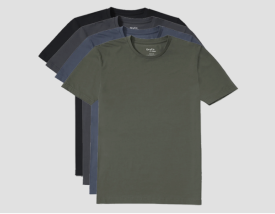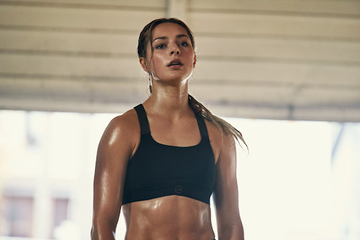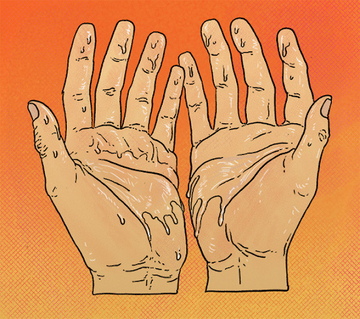Returning to the office after over a year of COVID lockdowns can give even the most laid-back employee a reason to sweat. But for those of you who relish not having to worry about your hyperhidrosis rearing its ugly head while working from home, it’s only natural that you’re scrambling yet again to discover the best ways to hide sweat.
Fortunately, you can ameliorate much of your sweat woes by adjusting your style. Below, we give you some quick tips on how to sweat-proof your outfits.
Moisture-Wicking Fabrics
When left unmanaged, hyperhidrosis can severely impact your perception of yourself as a professional. It can lower self-confidence levels, impact your social skills, and may even cause your productivity to plummet. But, what if we told you that all of that can be prevented by your choice of clothing fabric?
Moisture-wicking fabrics are a hyperhidrosis sufferer’s best friend. While it isn’t a cure for your excessive sweating, these fabrics can help you to achieve that professional appearance you’re seeking while keeping sweat marks at bay. Using modern technical fabrics, moisture-wicking undergarments provide two duties: the quick absorption of moisture into the fabric’s top layer and the rapid drying of the fabric.
Neat Apparel’s collection of sweat-resistant clothing is known for its moisture blocking properties and its maze-like fabric construction which diffuses sweat and body odor quickly - allowing you to look and feel professional in the office.
Wear Layers Appropriately
Another easy way to adjust your style to accommodate your hyperhidrosis is to re-think how you wear layers. One of the biggest fears of a hyperhidrosis sufferer is unsightly sweat marks gathering either under the armpits or down the center of the back. With that said, the key to sweat management is planning.
While it may seem counterintuitive, dressing in the right amount of layers can help with excessive sweating no matter what season it is. The goal is to wear a combination of lightweight, professional moisture-wicking fabrics and layers. During the summer, a sweat-proof undergarment and a t-shirt may be sufficient. While during the colder months, you may choose to add a sweater or blazer as an additional layer.
Choose Colors Appropriately
As all professionals with hyperhidrosis know bright, neon colors and shades of grey do not bode well for a sweat-free appearance. Wearing these colors is the equivalent of tattooing the phrase I sweat a lot across your forehead.
When it comes to choosing professional moisture-wicking clothes, stick to darker colors such as navy or a very light color such as pale pink or white. As clothes become wet with sweat, they tend to go darker hence why blacks and navy are a great option - these colors are on the dark end of the spectrum already meaning it will be less noticeable to others when you sweat.
White works in a similar way. As there is no dye or hint of color, a white shirt or blouse expertly conceals any marks left from excessive sweating. However, keep in mind that using antiperspirants while wearing a white t-shirt or shirt can stain it yellow.
Prevent Sweat Stains
If your current strategy for dealing with sweat stains is taking action only when they start to appear then you’ve already failed. Game over. You’ve lost. Being proactive is key to preventing sweat stains and the prevention methods listed below can help.
- Lifestyle Changes: Ongoing management of hyperhidrosis requires you to be mindful of what you’re consuming and how you are feeling. By eliminating stressors that cause anxiety and cutting back on certain foods and beverages such as caffeine and greasy foods can help prevent sweat stains.
Say Goodbye to Sweat Woes and Return to the Office in Style
While adjusting your office style isn’t a replacement for addressing the triggers or underlying conditions causing your hyperhidrosis, it is proven to boost your confidence in the office.
Being able to conduct a client meeting or present in front of your team without having to worry about excessively sweating through your clothes is a blessing for all hyperhidrosis sufferers. Now with a return to the office looming even closer, there’s no need to sweat a return to the office. By taking some of the hyperhidrosis solutions mentioned above onboard, you can look and feel great without letting the sweat get you down.
Looking for more insights on how to best manage excessive sweating? Visit our NEAT Freaks blog for more hyperhidrosis tips and tricks.








